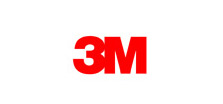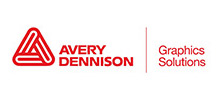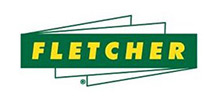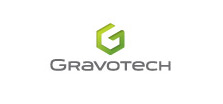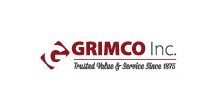The World of Custom Decals Unveiled
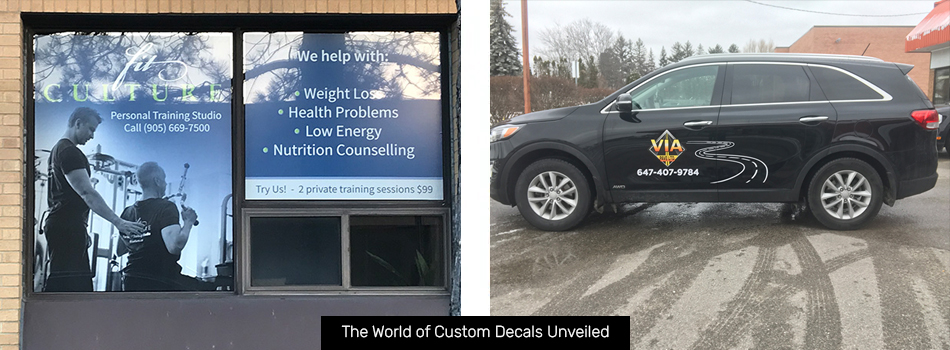
Custom decals have become indispensable in modern branding, personal expression, and decoration. These versatile designs, which can be applied to a variety of surfaces, allow individuals and businesses to transform ordinary objects into unique, eye-catching displays. Whether for advertising, personalization, or aesthetic enhancement, custom decals offer a creative and practical solution. This comprehensive guide will explore the evolution, versatility, design process, materials, installation, and maintenance of custom decals.
The Rise of Custom Decals
The history of decals dates back to the early 20th century, when they were initially used for simple identification and decoration. Early decals were primarily water-slide transfers used on ceramics and other objects. Over the decades, advancements in materials and printing technologies have significantly evolved decal production, leading to the development of more durable and versatile vinyl decals.
The advent of pressure-sensitive adhesives revolutionized the decal industry in the 1950s. This innovation made it easier to apply decals without the need for water or other bonding agents. The introduction of vinyl as a primary material in the 1980s further enhanced the durability and flexibility of decals, allowing for more intricate and vibrant designs.
Today, custom decals have gained immense popularity in personal and professional spaces. Businesses use them for storefront displays, vehicle wraps, and promotional materials, while individuals enjoy personalizing their gadgets, home decor, and vehicles. The increasing demand for custom decals is driven by their ability to effectively convey messages and enhance the visual appeal of various items.
The Versatility of Decals
One of the most appealing aspects of custom decals is their versatility. They can be used in a multitude of applications, making them suitable for various settings and purposes:
- Business Branding: Custom decals are a powerful branding tool for businesses. They can be used on storefront windows, walls, floors, and vehicles to increase visibility and reinforce brand identity. Eye-catching decals attract customers and communicate key messages effectively.
- Vehicle Customization: Vehicle decals are popular for both personal and commercial use. Businesses use vehicle wraps to turn company vehicles into mobile billboards, while individuals customize their cars with decals that reflect their personality.
- Home Decor: Decals offer a cost-effective way to enhance home interiors. They can be applied to walls, windows, furniture, and appliances to create unique designs and themes. Wall decals, in particular, are popular for adding a personal touch to living spaces.
- Personal Gadgets: Custom decals are an excellent way to personalize laptops, phones, tablets, and gaming consoles. These decals add a unique aesthetic and provide a layer of protection against scratches and wear.
Custom decals can adhere to a variety of surfaces, including glass, metal, plastic, and painted walls. Their adaptability makes them an ideal choice for creative expression and practical applications.
Designing Custom Decals
Designing custom decals is a creative process involving several key elements to ensure the final product is visually appealing and effectively conveys the desired message.
Colour Choice
Colour is one of the most important aspects of decal design. The right colour scheme can attract attention and convey the intended message effectively. Here are some considerations for choosing colours:
- Brand Consistency: Use colours that are consistent with your brand’s identity. This helps in reinforcing brand recognition and creating a cohesive visual experience.
- Contrast and Visibility: High-contrast colours ensure the decal is easily readable from a distance. Pairing dark colours with light backgrounds or light colours with dark backgrounds can make text and images stand out.
- Psychological Impact: Colours evoke emotions and reactions. For instance, red conveys urgency or excitement, blue suggests trust and professionalism, and green indicates growth and tranquillity. Choose colours that align with the message and tone you want to set.
Typography
Typography plays a crucial role in ensuring that your message is communicated clearly. The font style, size, and arrangement all contribute to the overall effectiveness of the decal:
- Legibility: Choose fonts that are easy to read. Avoid overly decorative fonts that can be difficult to decipher, especially from a distance.
- Font Size: Ensure the text size is appropriate for the viewing distance. Larger text is necessary for decals that will be seen from afar, such as on vehicles or storefronts.
- Font Style: The font’s style should match the tone of your brand. For example, a playful, casual business might use a fun, whimsical font, while a professional service might opt for a clean, modern typeface.
- Hierarchy: Establish a hierarchy in your text to guide the viewer’s eye. Use different font sizes and weights to differentiate between primary and secondary information, making the most critical message stand out.
Imagery
High-quality imagery is essential for creating professional-looking decals. Images and logos should be clear, relevant, and complement the overall design:
- Resolution: Ensure all images are high resolution to prevent pixelation when printed. This is especially important for larger decals where low-quality images can appear blurry.
- Relevance: Use images that support and enhance your message. Irrelevant images can confuse viewers and dilute the impact of your decal.
- Placement: Position images strategically to create a balanced design. They should draw attention without overwhelming the text or other elements.
Message Hierarchy
The layout of your decal should guide viewers through the information logically and intuitively. Establishing a clear hierarchy in your design ensures that the most important elements stand out:
- Primary Message: Identify the main message you want to communicate and make it the focal point of your design. Use larger fonts and bold colours to draw attention to this element.
- Supporting Information: Secondary messages or additional details should be smaller and positioned to complement the primary message. Avoid cluttering the design with too much text; keep it concise and to the point.
- Visual Flow: Arrange elements in a way that naturally guides the viewer’s eye from one point to the next. This can be achieved through strategic placement, colour contrast, and size variation.
Effective Use of Space
Effective use of space is crucial in decal design. Too much clutter can make the decal hard to read and less appealing. Here’s how to manage space effectively:
- Negative Space: Also known as white space, negative space refers to the empty areas around and between design elements. Proper use of negative space can enhance readability and focus attention on key components.
- Balance: Ensure a balanced distribution of elements. Avoid cramming too much information into a small space, and leave enough room around the text and images for them to breathe.
- Proportions: Harmonize the proportions of text, images, and logos. A well-proportioned design is aesthetically pleasing and easier to read.
Custom Vinyl Stickers vs. Custom Vinyl Decals: Understanding the Difference
While custom vinyl stickers and custom vinyl decals are often used interchangeably, there are distinct differences between the two:
- Material: Both stickers and decals are made from vinyl, but decals typically use a higher grade for increased durability and longevity.
- Durability: Decals are designed to withstand harsher conditions and last longer than stickers. They are often used for outdoor applications where they are exposed to the elements.
- Application Areas: Stickers are generally smaller and used for indoor applications, such as labelling and personal decoration. Decals, however, are larger and used for more permanent applications, such as vehicle graphics and storefront signage.
Understanding these differences helps in choosing the right product for specific needs and applications.
The Technical Side: Materials and Production
The production of custom decals involves several technical steps and the use of high-quality materials:
- Materials: Vinyl is the preferred material for custom decals due to its durability and versatility. It can withstand exposure to sunlight, moisture, and temperature fluctuations without fading or peeling.
- Printing: The design is first created on a computer using graphic design software. Once finalized, the design is printed onto vinyl sheets using high-resolution printers. The printing process ensures vibrant colours and sharp details.
- Cutting: After printing, the vinyl sheets are cut into the desired shapes using precision cutting machines. This step requires accuracy to ensure the final product matches the original design.
- Weeding: Weeding involves removing the excess vinyl around the design, leaving only the desired graphic. This step is crucial for achieving a clean, professional look.
Installation Tips and Tricks
Proper installation of custom decals is essential for ensuring their longevity and appearance. Here are some tips for successful application:
- Surface Preparation: Clean the surface thoroughly to remove dirt, grease, and dust. A clean surface ensures better adhesion and reduces the likelihood of bubbles.
- Application Tools: Use a squeegee or a credit card to smooth out the decal and remove air bubbles. Start from the center and work outwards to ensure an even application.
- Alignment: Align the decal carefully before applying it to the surface. Use masking tape to hold the decal in place while adjusting its position.
- Temperature: Apply decals in moderate temperatures. Extreme heat or cold can affect the vinyl’s adhesive properties.
Maintenance of Vinyl Decals
Maintaining custom decals involves regular cleaning and care to keep them looking fresh and vibrant:
- Cleaning: Clean decals gently with a soft cloth and mild soap. Avoid using abrasive cleaners that can damage the vinyl.
- Protection: Protect decals from prolonged exposure to harsh elements by applying a clear protective coating or wax.
FAQs About Custom Decals
Can custom decals be applied to any surface?
Custom decals can adhere to various surfaces, including glass, metal, plastic, and painted walls. Proper surface preparation is critical to ensuring good adhesion and longevity.
How long do custom vinyl decals last?
The lifespan of custom vinyl decals depends on the quality of the material and the conditions they are exposed to. High-quality vinyl decals can last 3 to 7 years, with some lasting even longer under optimal conditions.
Are custom decals removable?
Yes, custom decals are designed to be removable. With proper techniques, such as heat application, decals can be removed without leaving significant residue or damaging the surface.
Embracing the Power of Custom Decals
Custom decals offer a unique blend of creativity and practicality for personal and business applications. From their historical evolution to modern-day versatility, custom decals have proven essential in branding and individual expression. You can create impactful decals that stand the test of time by understanding the intricacies of decal design, from colour selection to typography and imagery, and choosing the right materials and installation techniques.
Whether you want to enhance your business’s visibility or add a personal touch to your belongings, custom decals from The Sign & Graphics Manufaktur provide a flexible and effective solution. With the right approach, these versatile designs can transform any surface into a canvas for your message or brand. Explore the endless possibilities with our sign company and see how our custom decals can make a significant difference in your world. Contact us today at The Sign & Graphics Manufaktur to start your journey towards stunning, impactful designs!
Also Read: What You Should Know About Custom Decals
Back




